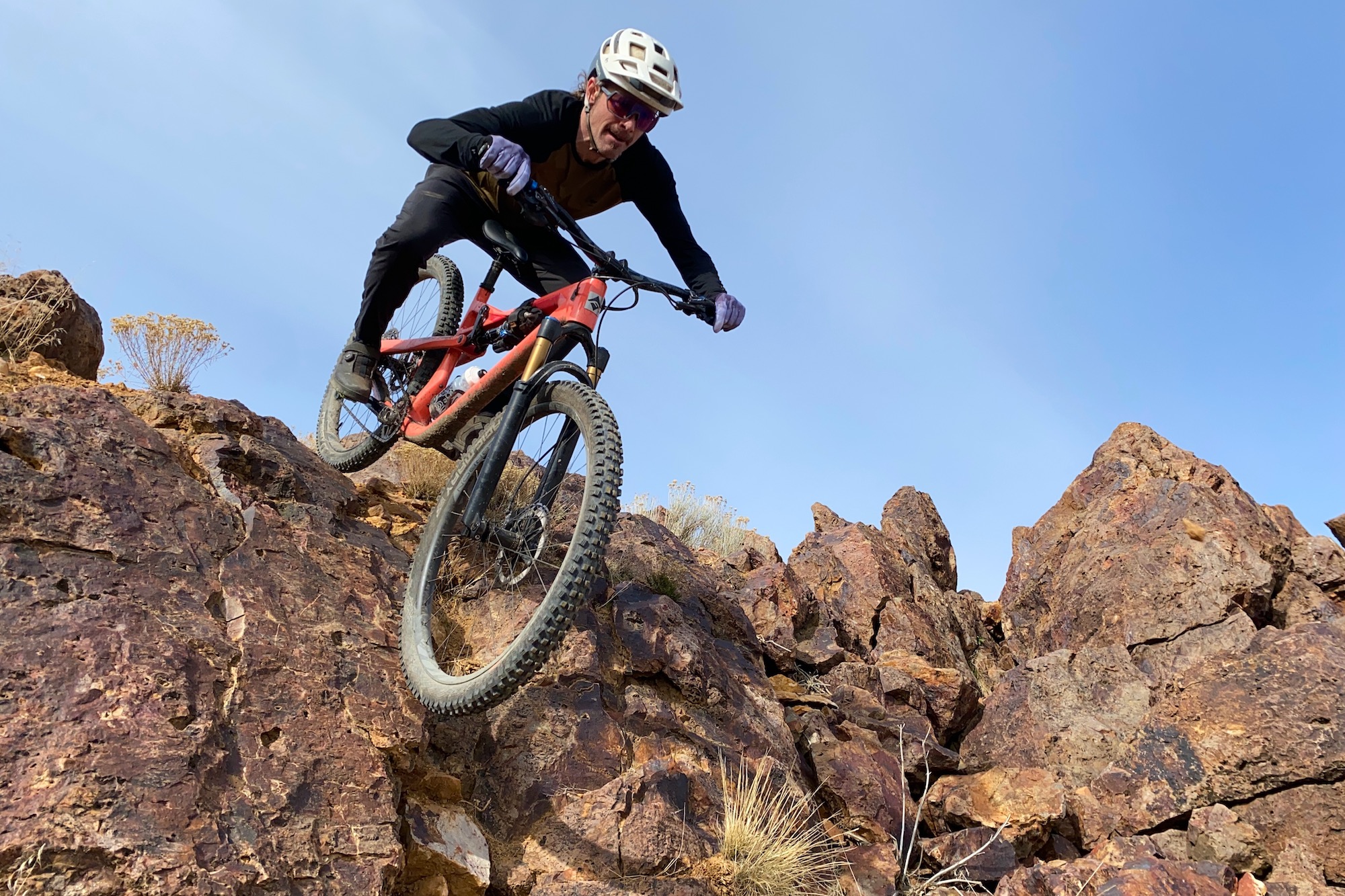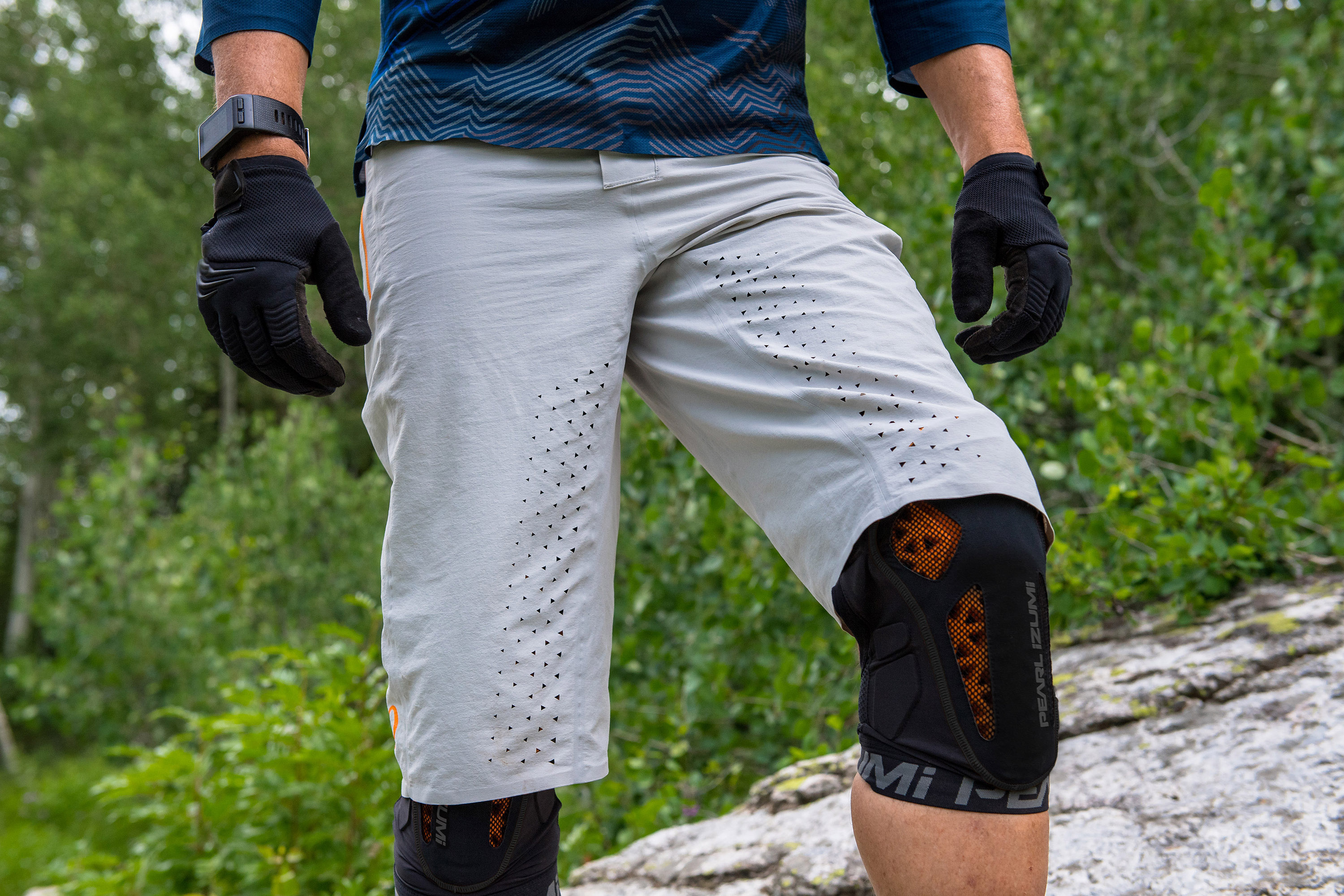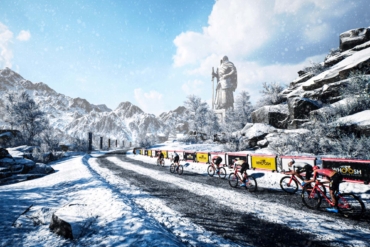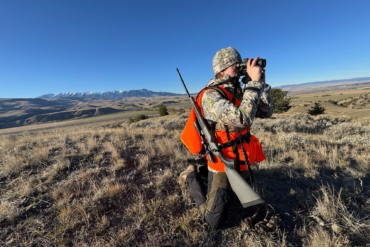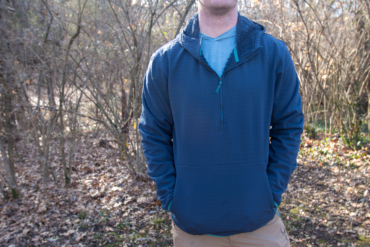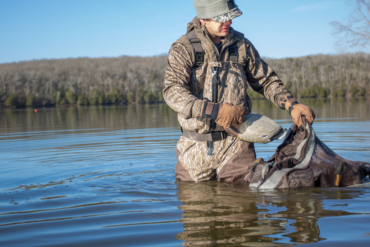From the vents of your helmet down to the cleats of your shoes, here are the mountain bike essentials you’ll need to be trail-ready.
Fresh air in the lungs, dust on the legs, sweeping landscapes in view — hitting the trail reaps huge physical and mental rewards. But if you’re putting rubber to the dirt for the first time, it can be a little intimidating. The right gear can make the transition to mountain biking more enjoyable.
We’ve outlined the basics to get you out and on the trail for miles of joy.
Essential Mountain Bike Gear
Helmet
Why You Need It
Navigating the trail comes with bumps and turns that can occasionally buck you out of the saddle. Protecting your head is priority No. 1.
How to Choose
The best helmet is one you don’t notice. And because you’ll be wearing it every mile in the saddle, look for a helmet that fits your head.
A helmet should fit snug, but not too tight, and never cause pressure points or hot spots. Micro-adjustment features, like a dial fit system and chinstraps, tighten behind the head and under the chin to fine-tune the fit, minimizing movement.
And because mountain biking can mean hot, sunny days, vents will pour fresh air over the head and a visor can cast a shadow as the trail moves in and out of the direct sun.
Most mountain bike helmets drop down in back, providing extra coverage in case of a fall. Innovations in crash protection, like MIPS, have been shown to reduce rotational forces on the brain in a crash. These helmets may cost a little more, but they provide confident protection in a lightweight package.
Pro tip: Buy your helmet at a local bike shop. This allows you to try on multiple helmets to find the one that fits best.

Jersey
Why You Need It
Hot days on the trail are paid out in liters of sweat. You’ll need a jersey that breathes well and wicks sweat quickly.
How to Choose
Mountain biking roots are more laid back than road cycling. And because you’ll spend as much time climbing as bombing the descent, the attire doesn’t need that second-skin fit to cut through the wind.
Mountain bike jerseys fit looser for better airflow and are offered in sleeveless, T-shirt, zip front, and even a little western-flare with pearl button-down snaps. But don’t assume their casual styling means they’re any less technical. Today’s mountain bike jerseys leverage the latest moisture-wicking fabrics. They dry fast and keep you comfortable on long rides that kiss the skyline.
Trail riders often sling a hydration pack over the shoulders to carry water and supplies, which often eliminates the need to store supplies in jersey pockets. Some jerseys forgo the storage pockets altogether.
PEARL iZUMi‘s Summit Top for men and women is made from recycled polyester, but the brand says it wears like your favorite T-shirt, providing technical quality in casual styling.
Another option for women, the Symphony Tank rocks a seamless racerback strap back, a built-in bra, and two back pockets to hold fuel for that extra lap on the trail. Bonus, it looks equally good hiking, running, or at the yoga studio.
Pro tip: The steeper the trail, the longer the sleeves. Long sleeves provide extra protection from the harsh sun as well as brush lashing.
Shorts
Why You Need It
For mountain bikers, shorts provide as much protection from the unpredictability of the trail as they do the saddle.
How to Choose
Padded Lycra bike shorts can pass in a pinch, but over time they will take a beating on the trail. The lightweight material can snag on a sharp rock and branches when taking a seat trailside for a snack. Investing in a pair of dedicated mountain bike shorts will prove a better option.
A good mountain bike short is durable, tapers around the legs, and has plenty of well-positioned pockets to holster your phone, keys, or an extra bar without getting in your way.
The waist shouldn’t feel bulky. Hook-and-loop adjuster straps can snug the fit around your midsection without binding the gut.
You still need a chamois to protect your backside. Good news for you (and your wallet), PEARL iZUMi offers shorts with integrated chamois in its men’s Summit Short and women’s Canyon Short.
The Summit Short’s attached liner is made to be cut out by clipping the two small tabs. And the Canyon’s liner is detachable off the rack. You can throw the chamois in the wash or pair the outer short with another padded short. Best of all, the Canyon costs $85, about the same price as a decent padded Lycra short.
Both of these shorts transition smoothly from the trail to the pub, so you and your friends can relive the ride back down in town over tacos and brews.
Pro tip: If you carry a phone, get a feel for how it fits in the pockets. Nothing is worse than having your phone slap against your knee with every pedal stroke.
PEARL iZUMi nailed this with its Trail Access Pockets on the Summit Shorts. The phone is cached on the underside of your leg for pedaling comfort, making the short super comfortable on the trail.
Gloves
Why You Need It
Gloves are one part grip, one part protection. Sweat or rain can make your grip slick. Gloves will keep you connected to the handlebars, prevent blisters, and, if you go down, you will appreciate the coverage.
How to Choose
Even for sunny summer rides, we like full-finger gloves. They deflect brush and protect your fingers when drifting corners at high speed. A good pair should be lightweight and nimble, allowing you to work the levers without overheating.
But they don’t need to break the bank. PEARL iZUMi’s Summit Glove offers a good entry point. Eschewing padding, they maintain feel and control on the bike. The neoprene back provides protection and flexibility, and the synthetic leather on the index finger allows you to work your touchscreen phone without taking the gloves off (which can be a hassle). Plus, these gloves come in men’s and women’s sizing.
The gloves have Velcro around the wrist and a pad on the thumb to wipe your nose. Best of all, they’re only $35.
Pro tip: More padding doesn’t mean more comfort. Glove padding can prevent proper positioning and cause fatigue. Choose a glove that fits snug (without constricting) as well as comfortable grips that pad where your hands rest on the bars.

Shoes
Why You Need It
More durable than gym shoes, a dedicated mountain bike shoe provides a stable platform to transfer energy from your legs, through the bike, to the ground.
How to Choose
Mountain bike shoes fall into two categories: flat pedal and clipless. Both should feel stiff, yet comfortable, and lock your heel into the cup. The choice depends on the type of riding you’ll do (and your comfort with unclipping from the bike).
Both newbies and technical riders will appreciate flat pedal shoes for similar reasons. PEARL iZUMi’s X-Alp Flow exemplifies why. The lightweight, lace-up shoe has a sneaker vibe that rides over a flat, grippy sole.
The outsole, meanwhile, provides traction for scrambling up loose, sandy trails and has a siped, smooth patch of rubber that sticks to flat pedal pins. You can get into these shoes for under $100 in men’s and women’s sizing.
Stepping off a flat pedal has zero learning curve, making it safer to tackle rocky terrain. Many bike shops will give you an inexpensive flat pedal as a start, making flat pedal shoes a great choice for budget-minded riders.
Clipless pedals (contrary to the name) “clip” onto your shoes through a cleat bolted between the lugs. The cleats snap into the pedal, locking your foot into the bike. Twisting your foot unlocks it from the pedal.
It takes some practice, but clipping into the pedals allows you to pull up and push down with each pedal stroke, providing maximum energy transfer between you and the trail. These are a great choice for more cross-country-oriented rides that don’t require constantly stepping in and out of the pedal.
PEARL iZUMi’s X-Alp Summit has a three-quarter-length composite shank riding under a chevron-lugged outsole. The shoe locks around the foot with two hook-and-loop power straps, and a third strap buckles near the ankle.
The brand says the shoes are stiff yet comfortable, and if you find yourself walking, the recessed cleats and EVA foam midsole make the X-Alp Summit an easy walker.
Pro tip: The shoe you buy informs the pedal you buy. As you become more competent in the saddle, a clipless shoe will allow you to better harness your pedal stroke.
Socks
Why You Need It
Socks wick moisture away from the feet, offer a bit of cushioning, and can protect the lower legs from flogging by brush.
How to Choose
Cycling socks are some of the very best socks you can buy. They stay up, are durable, and they’re fashionable enough to cross over into everyday wear. They also provide an inexpensive way to dial in your look. (“I have too many socks,” said no cyclist ever.)
Most are offered in three sizes (S, M, L) in a variety of heights (ankle, mid, and tall). Taller socks can provide a little more protection, support, and warmth.
You’ll find socks made from synthetic or natural fibers, with natural most often available in merino or wool-mix (stay away from cotton!). Both wick away moisture, keeping feet drier and reducing hot spots. PEARL iZUMi’s Elite Socks are an inexpensive synthetic-blend sock that is cleverly woven to cushion and let your feet breathe. Bonus: They come in a variety of colors that can match all of your kits.
Pro tip: It’s nearly impossible to step off the trail without getting dirty. Darker socks hide trail dust.

Jacket
Why You Need It
Backcountry weather can be fickle. Summer afternoons can quickly shift from sunny to stormy in the flick of a gear. Like hikers, mountain bikers should prepare for the worst. Every rider should stow a simple jacket in the pack to unfurl with the change of weather.
How to Choose
A waterproof-breathable jacket can protect you from a rainstorm, but it can often be too warm (and bulky) for riding. It just can’t move moisture fast enough to match how much you sweat while riding.
Unless you regularly ride in the rain, most riders will be better served with a water-resistant jacket. This will have a DWR coating to shed light rain, while the lightweight material helps cut through the wind and disappears in the pack. On cold morning rides, these jackets provide fantastic warmth when you point the rubber down the hill.
PEARL iZUMi‘s Summit Jacket — men’s and women’s — is a wind jacket with a two-way front zipper to batten down or vent the core. The svelte hood fits under the helmet, and a few reflective accents allow drivers to see you once you’re back in town.
Pro tip: Less is more. If you’re new to riding, your instincts may have you reaching for an insulated jacket on the way out the door. Mountain biking generates a lot of heat that gets trapped inside the jacket. Instead, bring a pair of arm warmers to pair with your wind jacket.
Joint Protection
Why You Need It
Terrain changes quickly when mountain biking, especially on trails you’re unfamiliar with. As you start to point the rubber down more technical terrain, consider knee and elbow pads. Protecting your knee and elbow joints ensures you’ll be ready to ride another day.
How to Choose
While we all want to keep the rubber side down, inevitably we all take a tumble. Knees and elbows unfortunately take the brunt of it. Protect your joints with lightweight pads. A good pad will have some pre-curve to fit around the joint while allowing it to articulate. Hook-and-loop tabs or elastic grippers keep the pads from falling down.
Vessels run closer to the skin in the elbow and knee pits. It’s the body’s way to spill the heat. Thick pads can slow the cooling, leaving you hot and sweaty. So look for material that secures the pads without sacrificing breathability and mobility.
If you’re venturing out onto more aggressive descents, PEARL iZUMi’s Summit line is an affordable entry point for protection. The brand’s Summit Elbow and Knee Guards have a durable but flexible four-way stretch CORDURA fabric with a mesh in the pit. The arm and leg warmer designs stay put with elastic grippers. The Summit series hits that sweet spot of durability, breathability, and protection without the sticker shock. So there’s really no excuse not to bring them.
Pro tip: Your shorts should hang over the pads and remove gaps between the pad and the shorts, minimizing the chance of binding while pedaling.
MTB Kit Extras
Part of the joy of mountain biking is being self-contained. Enjoy the best of it, but be prepared for the worst.
Because 15 miles up the trail is a heckuva long way from the car, every rider should carry a spare tube, bike pump, or CO2 inflater with a full cartridge, tire levers, multitool, snacks, water, and a device with the Trailforks app (and local maps downloaded). And, most importantly, you need to know how to use them all.
Plus, it’s never a bad idea to let someone know where you’re riding.
This article is sponsored by PEARL iZUMi. See more of the brand’s cycling apparel and gear offerings here.


